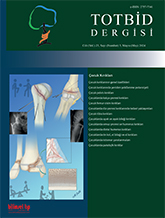
Tibia fractures are the third most common long bone fractures in the pediatric population, after forearm and femur fractures. 11% of tibia fractures occur in the proximal tibia, 39% in the diaphysis, and 50% in the distal third. Proximal and distal tibia fractures are areas open to complications due to their proximity to growth cartilages. Although anteroposterior and full lateral radiographs are usually sufficient in the diagnosis, computerized tomography (CT) to understand the fracture configuration in fractures involving the joint and magnetic resonance imaging (MRI) to detect ligament injuries should not be avoided. The amount of separation of the fracture is generally a guide when making a treatment decision. Conservative treatment is preferred for non-dissociated fractures and for fractures that are separated but an acceptable alignment is achieved after reduction; for fractures that cannot be reduced or whose reduction cannot be preserved, surgery is preferred. The main purpose of pediatric fracture surgery is to complete the treatment without damaging the growth cartilages and to avoid complications. In pediatric tibial fractures, wherever the fracture is located, all pretraumatic functions are usually restored with appropriate and timely treatments. In some types of fractures in which growth cartilages and joints are affected, complications such as angular deformities and limb length inequalities, which are more common in pediatric cases, should be considered.